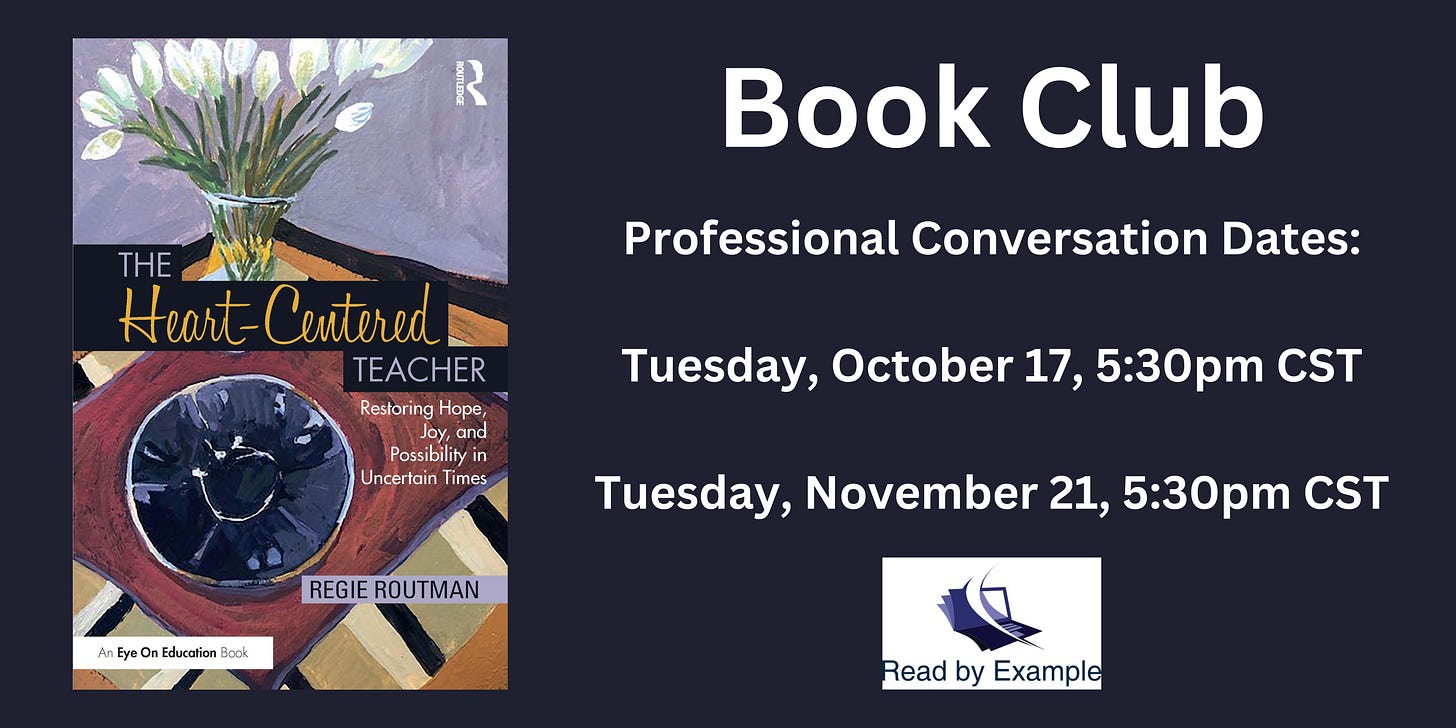The School Leader's Role in Supporting New Tech
As society experiences increasing complexity, educators and education struggle to keep up.
As you likely already know, ChatGPT, created by OpenAI, is artificial intelligence that can create novel written responses to someone’s query or request. ChatGPT uses information available on the Internet to generate an answer to a question or an original article on a topic.
Imagining a secondary teacher’s possible initial reaction of worry or suspicion, I tried ChatGPT out with my 8th grade daughter on hand.
Our query: “Write a five-paragraph essay summarizing the three major themes of The Last Cuentista (a Newbery-award winning middle-level novel; affiliate link).”
The essay it created around storytelling, cultural identity, and the power of family was impressive. Yet if it were handed in to a teacher as written, it may not have passed a teacher’s threshold for high-quality writing.
For example, ChatGPT was confused about who was the main character (see italicized phrase).
“Donna Barba Higuera’s The Last Cuentista is a captivating novel that revolves around a young boy named Miguel and his journey to discover his identity and heritage. Throughout the story, there are three significant themes that emerge, including the importance of storytelling, the struggle of cultural identity, and the power of family.”
Miguel is the brother to Petra; Petra is the story’s protagonist.
As the piece was generating, I glanced at my daughter. Eyes wide, she saw me looking at her and then quickly stated, “I wouldn’t use this for class, you know. That’s cheating.”
I laughed, affirmed that I knew she was an honest person, and then asked how a student might be able to use this tool for learning. She was unsure, so I offered a few ideas.
“Imagine a student who didn’t have a lot of experience or background knowledge in reading a science fiction novel like this. They could use this as a reading guide to help identify evidence of the themes.”
“Or a student could delete most of the content and leave just the first sentence of each paragraph to rewrite in their own words. They could write using the outline as a template.”
“Or a teacher could print out a copy of this essay, hand it out to students, and tell them ‘This is a minimally effective piece of writing. As we read The Last Cuentista together, you will revise it and make it better.’ The whole unit could focus on revision.”
My daughter silently nodded, acknowledging these ideas as a child of an educator – a win in my book!
Supporting teachers’ exploration and use of evolving tech
The point to be made here is not whether ChatGPT is good or bad, or whether any technology should garner a similar assessment. Rather, my interest is in how we as school leaders support teachers to engage in professional dialogue, discussion, and decision-making about technologies and other new ideas in education.
Given the necessary time, space, and structure, I am confident educators can develop unique ideas for applying tools to improve the learning experience for students. Let’s use ChatGPT as an example.
Facilitating professional learning around ChatGPT as an instructional leader
#1 – Start with an essential question.
To begin a professional learning session, I could pose the following question: “How might ChatGPT help or hinder classroom instruction?” Then I would encourage teachers to explore, talk, and share with each other as they tried the AI tool out for themselves.
For faculty with little background knowledge around this topic, consider George Couros’s question – What are AI and ChatGPT, and how is it different from Google? – to build off of teachers’ prior knowledge.
#2 – Reduce professional learning plans to a minimum.
Ample time and space for professional conversations is uncommon in education. This is largely due to lack of respect and trust in the teachers we have entrusted to educate our kids.
Leaders can disrupt this attitude by minimizing how much “teaching” we actually do during professional learning and extend our confidence in their capacity through our actions.
Knowing idle time can lead to a lack of focus, consider facilitating a Q&A board on chart paper or a digital tool such as Padlet to host an asynchronous discussion. When someone has a question, encourage them to post their inquiry publicly so the group can explore it together.
#3 – Provide teachers with a framework for integrating technology in their instruction.
As an example, teachers can use the following questions based on criteria for effective technology implementation from John Hattie’s book Visible Learning (Routledge, 2023, affiliate link) to critically guide a ChatGPT exploration:
✦ Are diversity teaching strategies promoted through the use of the technology?
✦ Are there multiple opportunities for student learning (e.g. deliberative practice, increasing time on task)?
✦ Are the students (vs. the teacher) in “control” of learning?
✦ Is peer learning optimized for students?
✦ Is feedback from peers as well as from teachers optimized for students?
#4 – Follow up, discuss, and celebrate.
Accountability doesn’t have to be a bad thing. As a leader, we can create “positive accountability” by checking into classrooms and asking teachers questions about the implementation process.
1. How has the implementation of this technology gone so far for you?
2. What’s working for your students? What’s not?
3. What have you learned from this process?
Anything the teacher offers can be a point for future conversation and hopefully celebration. Teachers have been asked to do so much over the last three years due to the pandemic. Any attempts with innovation should feel like a win for them. We can support teachers by acknowledging their reality through dialogue and by recognizing their efforts to improve.
The new technologies to come
There will be new technologies introduced to the world in the future; how will educators navigate the next ChatGPT?
Teachers who are lifelong learners and are trusted to make responsive decisions with the help of time, space, frameworks, and support will be best positioned to manage these types of changes. As school leaders, we create these conditions for success.
Bonus: Try out this template to facilitate professional learning for technology integration in your school. You can learn more about this topic in my books here.
This article was originally published for MiddleWeb. To received future posts like this, sign up below. Full/paid subscribers can access additional benefits in this space, including monthly book/article clubs and print-friendly versions of these posts in the resources page.



Thanks Matt for this thoughtful piece. My knowledge of ChatGPT is very minimal, so I found the story, information, and suggestions you provided for teachers and leaders--around smartly navigating Chat GPT-- very helpful for increasing my understanding of this tool.
Your experience with your daughter is interesting. I want to push back a bit on the structure of this experience to make a core point which I believe is an obstacle in getting people to entertain using GPT for serious purposes. I believe people who have resisted GPT until now are building more and more strength in the conviction that GPT is dangerous because it facilitates cheating in two ways: 1) deceptive use of text (fraud, plagiarism) and 2) short circuits learning. As the conviction strengthens, the likelihood of regaining an open mind diminishes.
GPT is a specialized digital tool. One common misconception is that it reads and writes. It’s easy to believe it can and does read a book when you ask it to tell you about a book using a title in the prompt. But it does not--cannot--read the actual text. Instead, it scans mathematical vectors to locate patterns of words it calculated in its unsupervised training mode. You used words like essay, three themes, book, write, the title of the book; it used a digital,syntactic parser to identify the verb and object and thereby isolated the parameters of the task. It then scanned these vectors for the most probable patterns of words or word particles associated with the title, the object of the task. These word patterns were assembled during training from book reviews, blog posts, online plot summaries, and the like, which provided nodes in other mathematical vectors. Not once did it read the book.
The word “book” is likely to occur in patterns of meaning where words like “theme” and “characters” appear. These are coded digitally as nodes on a digital frame that statistically interact with nodes like “bookawards” and “bookreviews.” The training involves semantic patterns that occur often in the vicinity of particular letter strings, so two or more words together can identify a node. When GPT misidentified the protagonist, it was not “confused.” Confusion is a human emotion or state. It selected Miguel by way of a signal linking protagonist to a character to a prominent character it coded from a New York Times book review. Miguel was named somewhere as an important character and in the moment of computation crossed a threshold of probability. The machine plays the odds like in Vegas. Knowing that means you have to fact check the bot. It’s not free from statistical miscalculations. This has nothing to do with confusion. In fact, GPT did have an accurate character in the right book. One time the bot told me Jane Eyre appears in the second act of Hamlet.
I personally would not ask a person who has not used a bot before to just use it. Like any tool, you use it according to your purpose. I’m not sure your daughter knew that by asking the bot to write an essay about a book she was actually formulating a command for a calculator to execute. Having a legitimate clear intellectual task with a good reason to think GPT can help is a prerequisite for beginning to understand how to use the tool.
A friend, for example, who has a fear of technology and is dead against the bot, gave me a chance to apply the bot to a real question she had. “Is it safer to use chemically based sunscreen or mineral based? She was amazed. Of course, her cognitive space working with the bots info, she dug deeper to verify. She went back to Google armed with some ideas to accept or reject. Another friend who had been promising me for months to try it, finally sat down with me. He came up with a question of immediate interest to him. As a former Green Beret, he wanted background on the phenomenon of Beret imposters--people who lie about their status to collect higher pensions.
Predictably, he also wanted to verify the information because it was a serious matter to him. Playing around with fictional or vague problems or tasks I don’t think works well. PD for teachers and the bot ought to be carried out via a carefully planned systemwide strategy with experts in using the tool leading orienting workshops. I’m seeing a lot of heads in sand, forcing teachers and administrators into coming up on their own with local schoolhouse strategies. Administrators need to become forceful advocates for organized and appropriate PD.